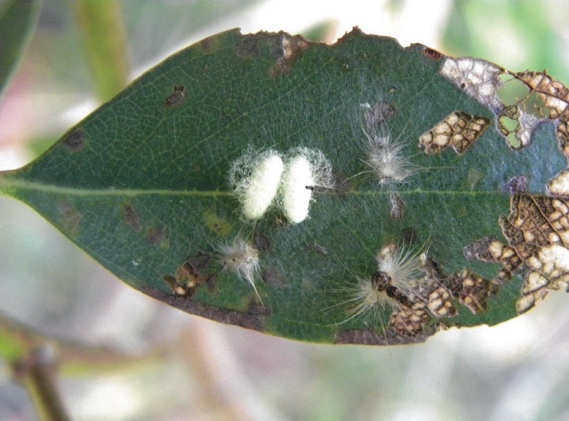PESTS AND DISEASES OF FORESTRY IN NEW ZEALAND
Biological control agent released for the Gum Leaf Skeletoniser in Bay of Plenty
Scion is the leading provider of forest-related knowledge in New Zealand
Formerly known as the Forest Research Institute, Scion has been a leader in research relating to forest health for over 50 years. The Rotorua-based Crown Research Institute continues to provide science that will protect all forests from damage caused by insect pests, pathogens and weeds. The information presented below arises from these research activities.
From Forest Health News 222, February 2012.
Bay of Plenty Regional Council biosecurity staff recently assisted in the release of a parasitic wasp (Cotesia urabae (Braconidae)) to control the gum leaf skeletoniser (Uraba lugens (Nolidae)).

Gum leaf skeletoniser (Uraba lugens) is an Australian moth whose caterpillars are capable of defoliating plantation and amenity eucalyptus trees in New Zealand. It was first discovered in Mount Maunganui in 1992. This population was eradicated but the skeletoniser was discovered nearly 10 years later to be well established in Auckland.
The gum leaf skeletoniser moth has been slowly moving from Auckland and was recently detected near Mt Maunganui. It has also been found in Northland, Waikato, Coromandel and Hawke’s Bay. It has even “jumped” to Nelson. Biosecurity staff from the Regional Council assisted an entomologist from Scion to release the parasitic wasp. This was done by releasing some parasitized caterpillars of the gum leaf skeletoniser onto a tree where skeletoniser caterpillars were already present.
The hairs of the gum leaf skeletoniser caterpillars can cause an irritating skin rash. Children playing beneath amenity eucalypt trees in school grounds are especially vulnerable. The Environmental Risk Management Authority approved the import and release of a parasitic wasp, Cotesia urabae, in July 2010. The wasp parasitizes only gum leaf skeletoniser caterpillars, does not harm native insects and cannot not sting or harm humans.
Belinda Gresham
This information is intended for general interest only. It is not intended to be a substitute for specific specialist advice on any matter and should not be relied on for that purpose. Scion will not be liable for any direct, indirect, incidental, special, consequential or exemplary damages, loss of profits, or any other intangible losses that result from using the information provided on this site.
(Scion is the trading name of the New Zealand Forest Research Institute Limited.)



